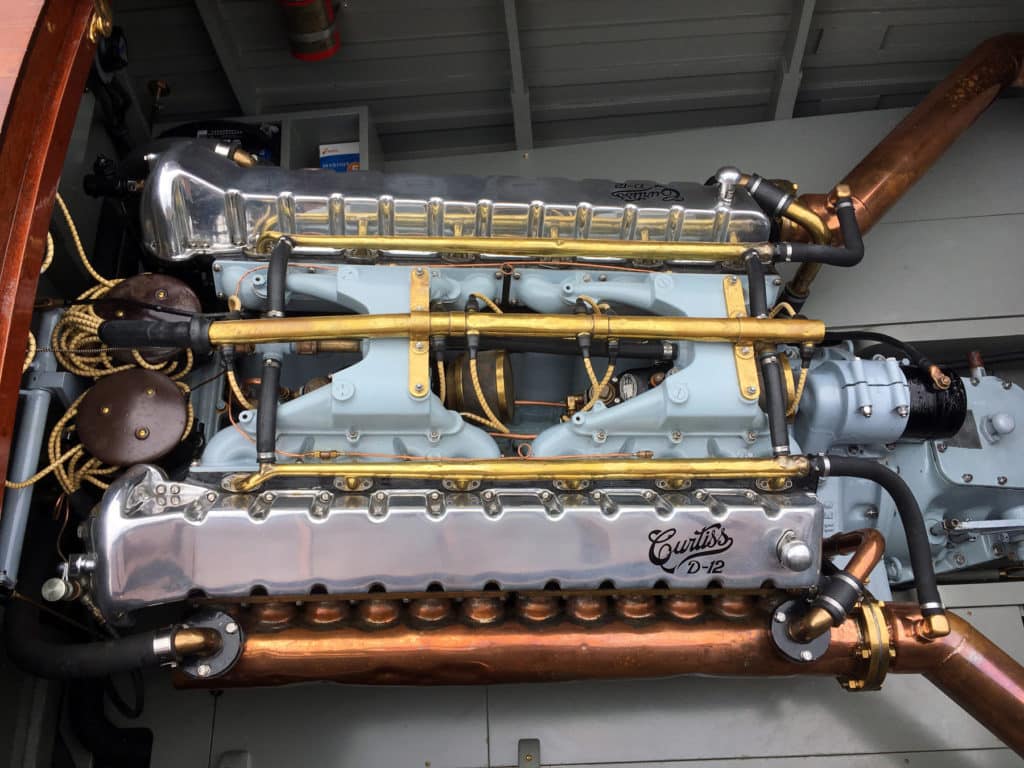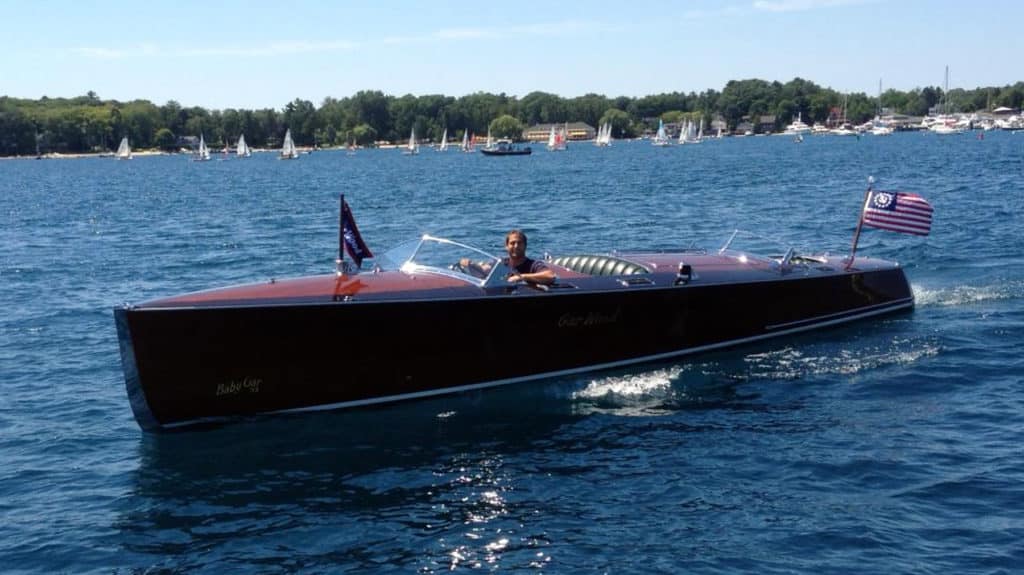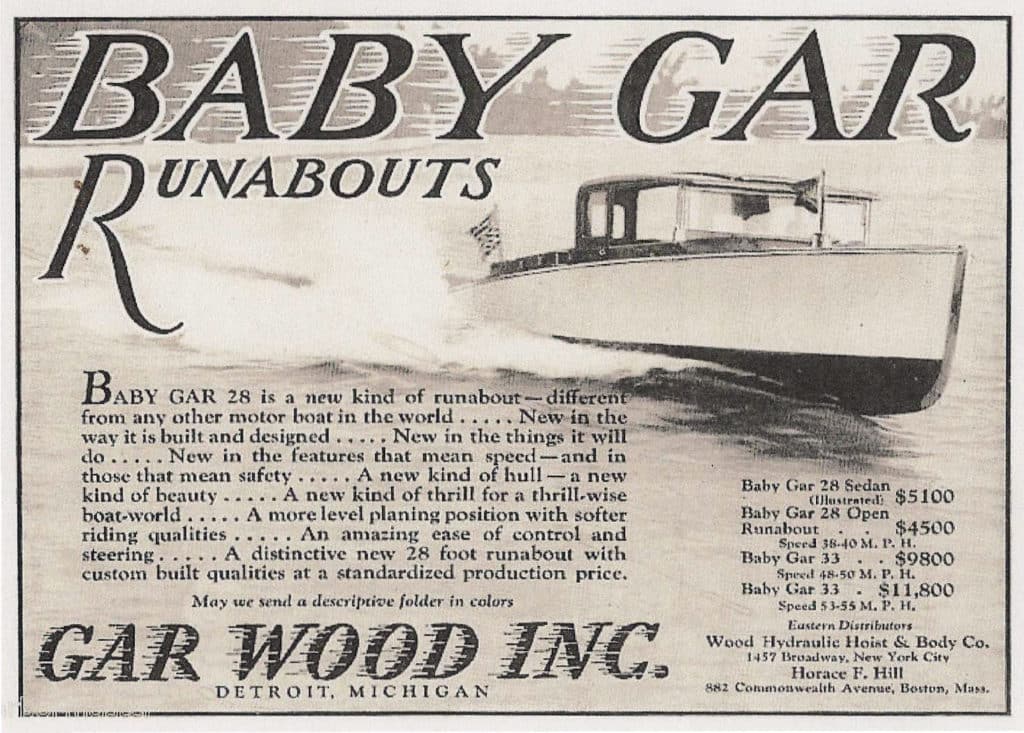
If you wanted serious power in the classic-boat era, you almost certainly turned to an aircraft engine from Scripps, Curtiss, Rolls-Royce, Wright or Lycoming. In the inter-war period, aircraft development advanced at a torrid pace, and the Curtiss Aeroplane and Motor Co. Inc. of Buffalo, New York, set the pace for power for a number of years. This fabulous Curtiss D-12 engine stopped me in my tracks when I spotted it at the 42nd Antique and Classic Boat Society meeting and show in Racine, Wisconsin, nestled in the bilge of the equally fabulous Garfield, a 1932 Gar Wood Baby Gar 33 runabout. The boat is owned by Bill Parfet of Kalamazoo, Mich., and is one of 65 examples of the Baby Gar 33 built by Gar Wood, of which only six are presently accounted for and four are seaworthy. A period advertisement offers the 33 for $11,300 for the highest horsepower models. That’s about $205,000 in 2017 dollars. The Baby Gar 33 was a gentleman’s speed boat and most were originally powered by a war-surplus, 1650 cubic-inch, 837-pound Liberty engine making about 400 hp. Some examples were later re-fitted with the Curtiss D-12.

The Curtiss D-12, designed by Arthur Nutt in 1921, was one of the first truly successful aluminum cast-block engines and considered America’s best water-cooled engine from 1921 to 1928. It was both lighter and more compact than other 400 hp engines of the time. It was the first engine to power a plane to 200 mph. In 1922, two U.S. Army R-6 Racers powered by the D-12 won the Pulitzer trophy with an average speed of 205 mph. After 1925, the Curtiss Company stopped development on the D-12 after achieving a virtual monopoly on fighter power plants. The D-12 won two Schneider Cups and was still a threat at the National Air Races up to the mid-1930s. Only a handful of these engines survive.

The Curtiss D-12 was a 680-pound, 1,145 cubic-inch (18.8-liter) V-12 liquid-cooled engine. Originally rated at 350 hp at 1,800 rpm, later versions developed about 450 hp at 2,200 rpm. The engine has seven main bearings, using separate cast blocks for the cylinders and crankcase. It has a dry-sump oiling system, and the cylinders used wet sleeves, which allowed water to contact almost the entire length of the cylinder. It used an old-style closed-end cylinder sleeve. There were four valves per cylinder operated by two camshafts, one for the exhaust and one for the intake valves. This allowed all of the exhaust valves to be located on the outside of the cylinder to 12 separate stacks, one for each exhaust port. The engine had a dual ignition system using Splitdorf SS-12 magnetos. Both spark plugs were located on the inside of the vee to prevent fouling. Stromberg NA-Y5 carburetors became standard for all D-12 engines.









